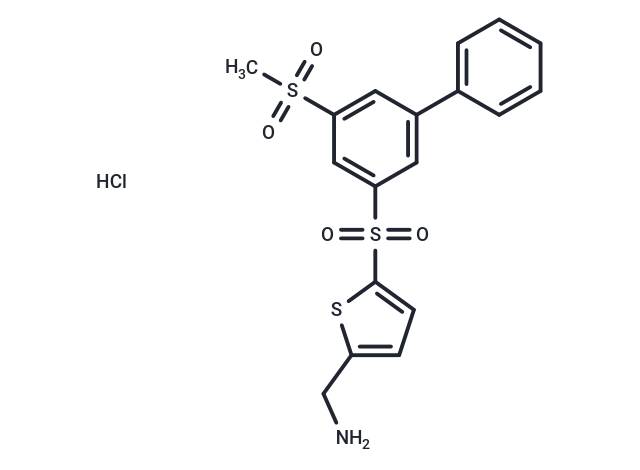Shopping Cart
Remove All Your shopping cart is currently empty
Your shopping cart is currently empty
CCT365623 hydrochloride is an orally active lysyl oxidase (LOX) inhibitor with an IC50 of 0.89 μM and suppresses EGFR (pY1068) and AKT phosphorylation induced by EGF.

| Pack Size | Price | USA Warehouse | Global Warehouse | Quantity |
|---|---|---|---|---|
| 25 mg | $1,820 | 1-2 weeks | 1-2 weeks | |
| 50 mg | $2,380 | 1-2 weeks | 1-2 weeks | |
| 100 mg | $3,100 | 1-2 weeks | 1-2 weeks |
| Description | CCT365623 hydrochloride is an orally active lysyl oxidase (LOX) inhibitor with an IC50 of 0.89 μM and suppresses EGFR (pY1068) and AKT phosphorylation induced by EGF. |
| Targets&IC50 | LOX:0.89 μM |
| In vitro | CCT365623 inhibits LOX at approximately 5 μM in the biosensor system. CCT365623 (0-40 μM) decreases surface EGFR protein levels in a concentration-dependent manner, disrupts HTRA1 multimerization, activates [TGFβ1] signaling, suppresses MATN2 expression, and reduces EGFR surface retention and signaling. At 5 μM, CCT365623 decreases pY1068 EGFR, pAKT, and MATN2 protein levels, while increasing pSMAD2 protein levels. |
| In vivo | CCT365623 (70 mg/kg, oral gavage per day) significantly delays the development of the primary tumors and also suppresses metastatic lung burden in the animals. CCT365623 disrupts EGFR cell surface retention and delays the growth of primary and metastatic tumor cells. CCT365623 exhibits a T1/2PO of 0.6 h and F% (oral bioavailability) of 45%. |
| Molecular Weight | 443.99 |
| Formula | C18H18ClNO4S3 |
| Cas No. | 2126136-98-7 |
| Relative Density. | 1.31g/cm3 |
| Storage | Powder: -20°C for 3 years | In solvent: -80°C for 1 year | Shipping with blue ice/Shipping at ambient temperature. |
| Size | Quantity | Unit Price | Amount | Operation |
|---|

Copyright © 2015-2025 TargetMol Chemicals Inc. All Rights Reserved.